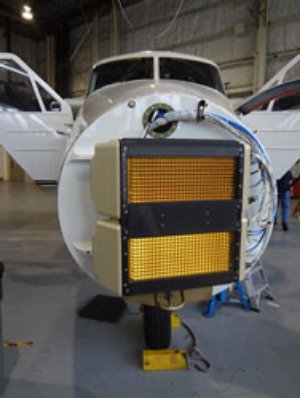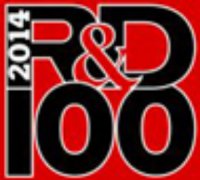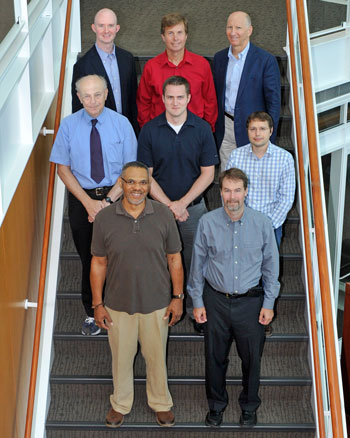MIT Lincoln Laboratory’s Airborne Sense and Avoid (ABSAA) Radar Panel is a stepped-notch antenna array that marks a substantial advance in the fabrication of wide-bandwidth radar systems for use aboard unmanned aerial systems (UAS).
The panel provides high performance by incorporating multifunction radio-frequency integrated circuits using a commercially available, high-volume silicon germanium (SiGe) 0.13-μm foundry process. Eliminating the separate cooling assembly and integrating the transmit/receive module into the surface-mounted assembly leads to improved reliability and simpler assembly. The panel also meets the constrained size, weight and power requirements for small platforms.
Designed especially for sense-and-avoid systems for unmanned aircraft, the panel supports both aircraft and weather detection and tracking modes in a single multifunction aperture. Smaller and less costly than competing systems, ABSAA’s successful design has the potential to facilitate the adoption of UAS in a broad range of applications, such as security and disaster response efforts, communications, aerial mapping projects and land and crop surveys.
 The Airborne Sense-and-Avoid (ABSAA) Radar Panel is a stepped-notch antenna array that may transform the way in which high-performance, wide-bandwidth radar systems are fabricated. The small physical size of the panel and its operational frequency range (Ku band, 13–15 GHz) make the ABSAA panel suitable for narrow beamwidth radar systems integrated on small platforms. Three innovations enable high performance for a fraction of the cost of traditional antennas: the incorporation of thermal cooling into the panel; the use of multifunction radio-frequency integrated circuits, manufactured in a commercially available, high-volume silicon germanium 0.13 µm foundry process; and the elimination of a separate transmit and receive module.
The Airborne Sense-and-Avoid (ABSAA) Radar Panel is a stepped-notch antenna array that may transform the way in which high-performance, wide-bandwidth radar systems are fabricated. The small physical size of the panel and its operational frequency range (Ku band, 13–15 GHz) make the ABSAA panel suitable for narrow beamwidth radar systems integrated on small platforms. Three innovations enable high performance for a fraction of the cost of traditional antennas: the incorporation of thermal cooling into the panel; the use of multifunction radio-frequency integrated circuits, manufactured in a commercially available, high-volume silicon germanium 0.13 µm foundry process; and the elimination of a separate transmit and receive module.
The ABSAA panel was designed especially for sense-and-avoid (SAA) systems mandated by the Federal Aviation Administration for operation of unmanned aerial systems (UAS) within the national airspace. ABSAA enables a sense-and-avoid system to detect aircraft in a substantial field of regard, at a sufficient range, and with sufficient accuracy to allow unmanned aircraft to quickly maneuver to maintain separation from another aircraft.
The panel supports both aircraft and weather detection and tracking modes in a single multifunction aperture. Its design has the potential to facilitate the expanded usage of unmanned aircraft systems into a broad range of applications, including security and disaster response efforts, aerial mapping projects, and land and crop surveys.
The ABSAA Radar Panel was developed by a multidivisional team led by Sean Duffy.
Team members include Patrick Bell, David Bragdon, Glenn Brigham, Rodney Cole, Matthew Edwards, Thomas Ferguson, H. David Goldfein, Jeffrey Herd, Edward Martin, Kevin Newman, Michael Owen, Daniel Santiago, and Sean Tobin.
Photo: The Airborne Sense-and-Avoid Radar Panel, seen integrated on a Twin Otter
Sources: R&D, Lincoln Laboratory


